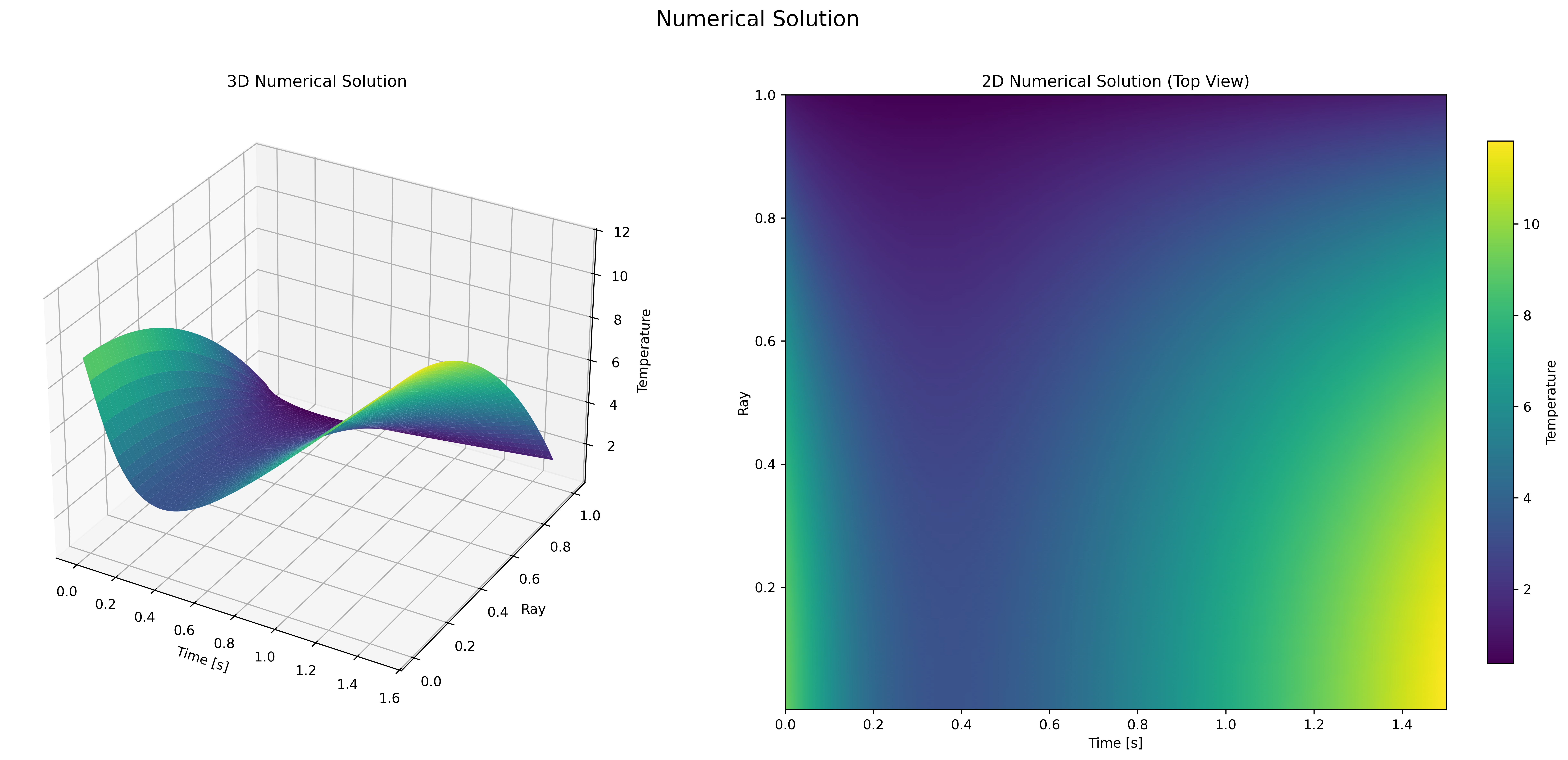
Numerical Methods for Solving Differential Equations in Transport Phenomena#
Transport phenomena (heat transfer, mass diffusion, and fluid flow) are governed by differential equations, often derived from the conservation laws of mass, energy, and momentum. The mathematical formulation of these problems generally leads to partial differential equations (PDEs), whose analytical solution is possible only in simplified cases, involving regular geometries, idealized boundary conditions, and restrictive assumptions (Incropera et al., 2007). Given the complexity of real systems, the use of numerical methods becomes indispensable.
General Formulation#
Transport equations can be expressed in a unified form by the advection-diffusion equation, which describes the variation of a conserved scalar \(\phi\) in space and time:
$$\frac{\partial \phi}{\partial t} + \nabla \cdot (\mathbf{u} \phi) = \nabla \cdot (\Gamma \nabla \phi) + S$$where \(\mathbf{u}\) is the velocity field, \(\Gamma\) is the diffusion coefficient, and \(S\) is a source term. The solution of this equation, as well as its variants (including the Navier–Stokes equations) requires the discretization of the continuous domain into a finite number of points, elements, or control volumes.
Main Numerical Methods#
1. Finite Difference Method (FDM)#
This method replaces spatial and temporal derivatives with approximations based on Taylor series expansions. It is particularly suitable for one-dimensional problems and structured grids and is classically applied in transient heat conduction problems (Chapra & Canale, 2015).
2. Finite Volume Method (FVM)#
This method is based on integrating the conservation equations over control volumes and applying the divergence theorem. It ensures both local and global conservation of transported quantities and is widely used in computational fluid dynamics (Patankar, 1980; Versteeg & Malalasekera, 2007).
3. Finite Element Method (FEM)#
This approach is founded on a variational formulation, in which the solution is approximated by shape functions defined over elements forming the mesh. It stands out for its flexibility in handling complex geometries and arbitrary boundary conditions, being extensively applied in multiphysics problems (Zienkiewicz & Taylor, 2000).
4. Spectral Methods#
These methods employ global basis functions (such as Chebyshev polynomials or Fourier series), providing high accuracy for problems in regular domains. They have been applied to the study of hydrodynamic instabilities and modal analysis of flows (Canuto et al., 2006).
Numerical and Computational Aspects#
Regardless of the chosen method, three fundamental properties must be ensured: consistency, stability, and convergence. The stability criterion, often associated with the Courant-Friedrichs-Lewy (CFL) condition, is particularly relevant in explicit methods. In addition, truncation and discretization error analysis is required to guarantee reliable results (Ferziger & Perić, 2002).
Final Considerations#
The choice of the numerical method strongly depends on the characteristics of the transport problem under study. While FDM is efficient in simple geometries, FVM stands out for its local conservation properties in complex flows, and FEM provides great versatility in irregular domains. Spectral methods, in turn, are preferred in analyses that demand high numerical accuracy. With the increase in computational power and the development of optimized algorithms, these numerical approaches have become indispensable tools in the modeling and simulation of transport phenomena.
